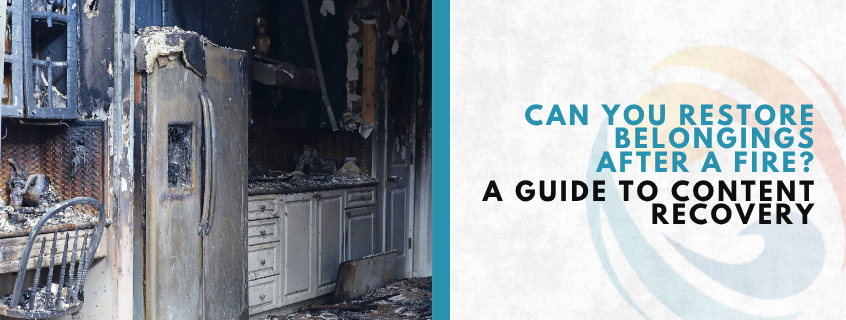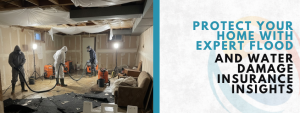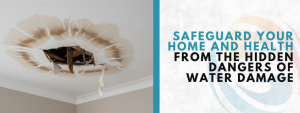
When a fire breaks out in a Redondo Beach home, it does more than scorch walls and roofs—it leaves a trail of emotional pain and physical damage.. One of the biggest questions homeowners ask after such an event is: Can you restore belongings after a fire? The good news is that yes, many household items and personal treasures can be recovered if you act fast and smart.
To begin the process of restoring belongings after a fire, professionals first inspect the scene. Items are assessed based on their exposure to fire, smoke, and water. If they haven’t been directly burned, there’s a good chance they’re salvageable. Specialized cleaning techniques such as ultrasonic cleaning, ozone treatment, and thermal fogging come into play. These aren’t just fancy words—they’re real processes used every day by fire damage experts.
Items that are commonly restored include:
- Clothing
- Jewelry
- Photographs
- Books and documents
- Electronics
- Furniture
- Dishes and cookware
- Toys and children’s belongings
Treatment of Belongings During Restoration
Let’s look at how different categories of belongings are treated during fire damage restoration in Redondo Beach:
Clothing and Fabric Items:
- Washed with deodorizing agents
- Treated using ozone or thermal fogging
- Dry cleaned if needed
Documents and Photos:
- Freeze-dried to prevent further damage
- Digitized as backups
- Cleaned using soft brushes or specialized vacuums
Furniture and Wood Surfaces:
- Sanded and refinished
- Cleaned with chemical sponges
- Reupholstered if needed
Kitchen Items:
- Washed using high-temperature cleaners
- Sanitized for safety
- Inspected for structural integrity
Here’s a table that breaks down common household items and their likelihood of being restored:
| Item Type | Likely to Be Restored? | Special Techniques Used |
| Clothes | Yes | Ozone treatment, laundry additives |
| Electronics | Sometimes | Dehumidification, chemical wipe downs |
| Documents/Photos | Often | Freeze drying, digitizing |
| Upholstered Furniture | Depends | Smoke deodorization, reupholstery |
| Wooden Furniture | Yes | Sanding, refinishing, and sealing |
| Toys & Baby Items | Case-by-case | High-temp cleaning, safety checks |
| Kitchen Utensils | Yes | Deep washing, sanitization |
The time it takes to restore belongings after a fire depends on factors such as the number of items, the extent of damage, and how quickly restoration begins, with content cleaning typically ranging from a few days to several weeks. To make the process smoother, it’s important to contact a fire damage professional in Redondo Beach as soon as it’s safe, avoid attempting to clean soot or residue yourself, refrain from using electronics until they’ve been inspected, keep damaged items as proof for insurance, and take photos and notes to support your recovery claim.
How Do Professionals Restore Belongings After a Fire?
Let’s take a deeper look at how professionals in Redondo Beach restore belongings after a fire using these methods:
Ultrasonic Cleaning: Items like jewelry, dishes, and tools are placed in tanks where high-frequency sound waves scrub off soot and contaminants. It’s gentle yet incredibly effective.
Thermal Fogging: This technique mimics smoke behavior. A fogging machine releases a deodorizing mist that penetrates fabrics and crevices, neutralizing smoky smells.
Ozone Treatment: Ozone gas molecules bond with smoke particles, destroying them. It’s commonly used for clothes, books, and anything with a lingering smell.
Freeze-Drying Documents: To stop mold growth and ink smearing, documents are frozen, then moisture is gradually removed. This preserves even old letters and photos.
When you try to restore belongings after a fire, the emotional value often outweighs the monetary one. That photo album, that childhood teddy bear, that heirloom necklace—these items matter. Restoration professionals understand this. Many companies now offer empathy-first recovery services, meaning they treat your belongings with the care and respect they deserve.
Is It Worth Restoring Belongings After a Fire?
- Sentimental Value – Some belongings, such as photo albums, heirlooms, or childhood keepsakes, carry memories that no amount of money can replace. Restoring them brings emotional comfort during recovery.
- Cost Savings – Restoration is often far more affordable than buying brand-new items. This makes it a practical solution, especially when dealing with large amounts of damaged belongings.
- Insurance Coverage – Many homeowner insurance policies cover the cost of content restoration, not just structural repairs, reducing the financial burden on families.
- Sustainability – Choosing to restore rather than replace reduces waste and supports environmentally friendly practices by extending the life of your possessions.
- Professional Expertise – Fire restoration experts use specialized methods such as ozone treatment, ultrasonic cleaning, and freeze-drying documents to salvage items that may appear beyond saving. Their skill often makes restoration both possible and worthwhile.
How Professionals Simplify the Restoration Process
Recovering from a fire in Redondo Beach can feel overwhelming, but professionals make the process smoother and less stressful by handling every step with precision. From assessing damage and securing the property to cleaning and restoring belongings, experts bring the tools and techniques needed for a faster, safer recovery. They know how to treat different materials, whether it’s furniture, documents, or electronics, ensuring items are salvaged whenever possible instead of being discarded, and helping homeowners restore belongings after a fire with care and expertise.
Fire Damage Restoration Redondo Beach specialists also provide valuable guidance through insurance claims, helping homeowners document losses and maximize coverage. Their use of advanced methods like ozone treatment, ultrasonic cleaning, and deodorization ensures smoke and soot are fully removed, restoring comfort and safety. With their expertise, families can focus on emotional recovery while professionals handle the technical challenges of bringing a home back to life.
Frequently Asked Questions (FAQs) Fire Damage Content Recovery & Restoration
What items can be saved after a house fire?
Many personal belongings can be saved after a fire, especially if the damage is addressed quickly. Items like clothing, furniture, electronics, family heirlooms, kitchenware, and documents often can be restored using professional methods.
How do professionals clean smoke-damaged items?
Certified fire damage restoration teams use specialized equipment and techniques to clean smoke-damaged items. This includes HEPA vacuuming, dry sponging, deep cleaning solutions, and deodorization processes like ozone or hydroxyl treatment.
Should I throw away everything after a fire?
No, you shouldn’t throw everything away. While some items may be beyond recovery due to heavy charring or chemical exposure, many others can be safely restored. Professionals assess each item individually, considering material type, exposure level, and replacement cost.
How long does it take to restore belongings after a fire?
The timeline for restoring belongings depends on the extent of the damage and the number of items affected. In many cases, the process takes from a few days to several weeks.
What is included in fire damage restoration services?
Fire damage restoration services go far beyond structural repairs. They include full smoke and soot removal, odor neutralization, air purification, pack-out and storage of contents, and full content cleaning.






